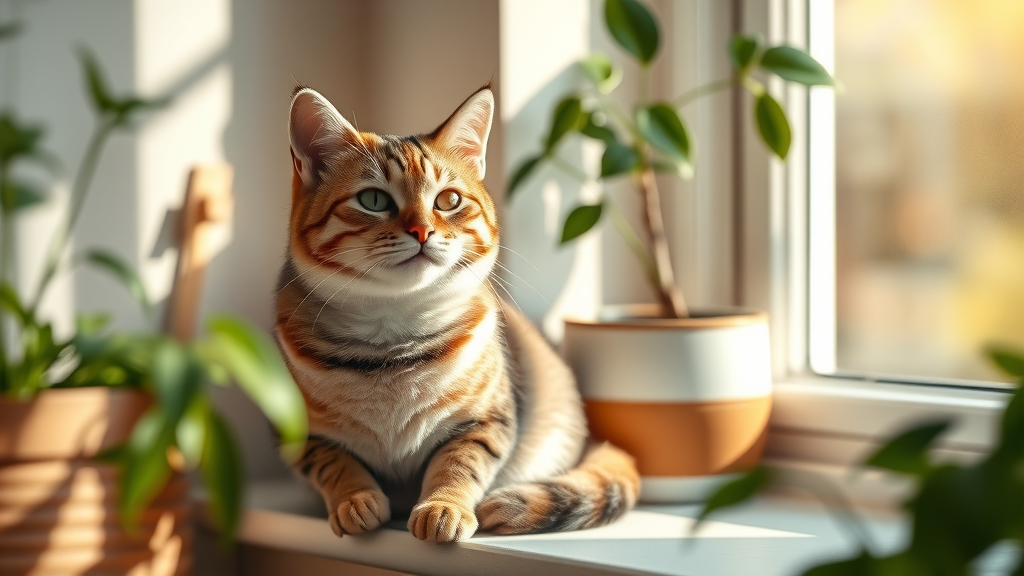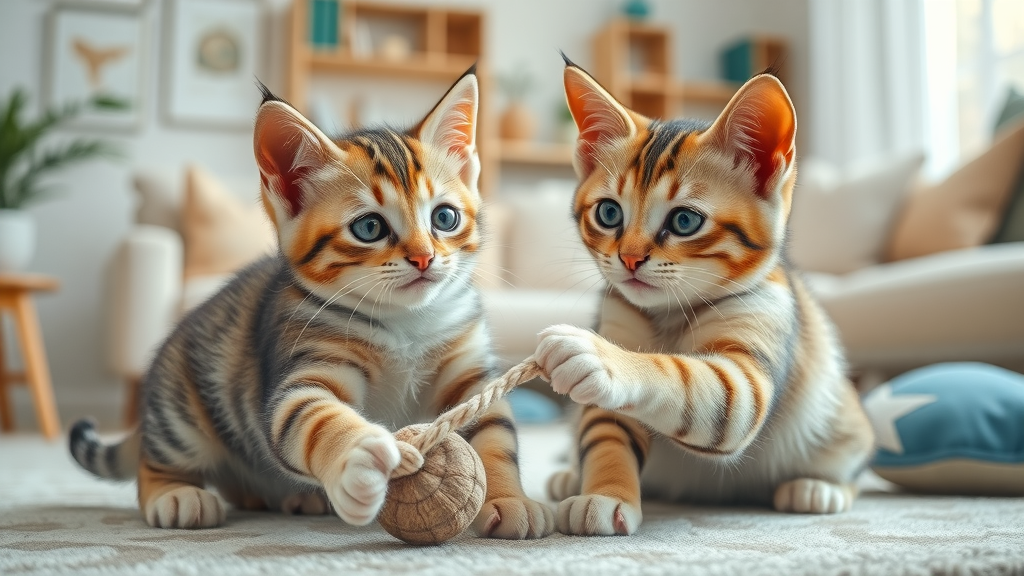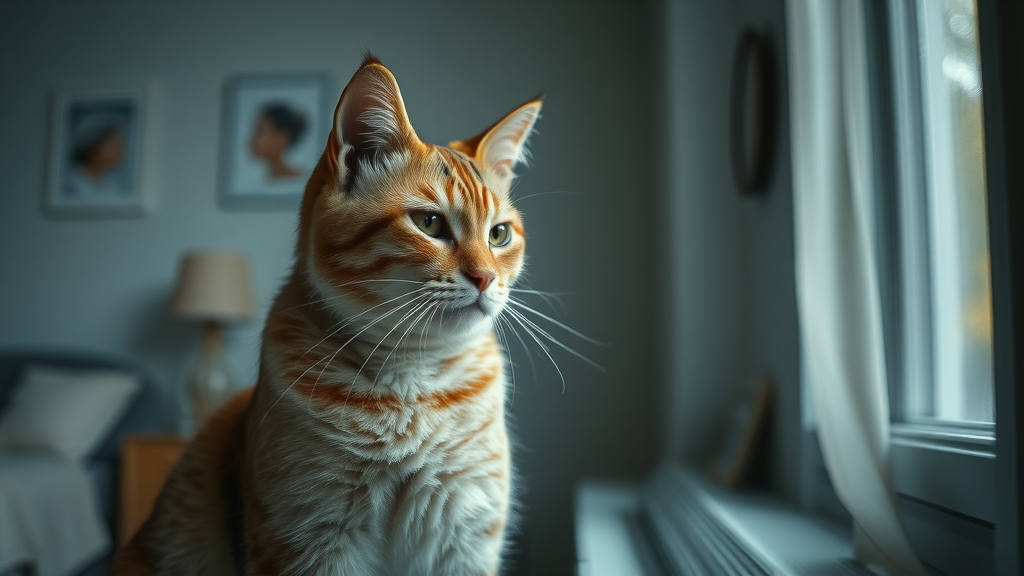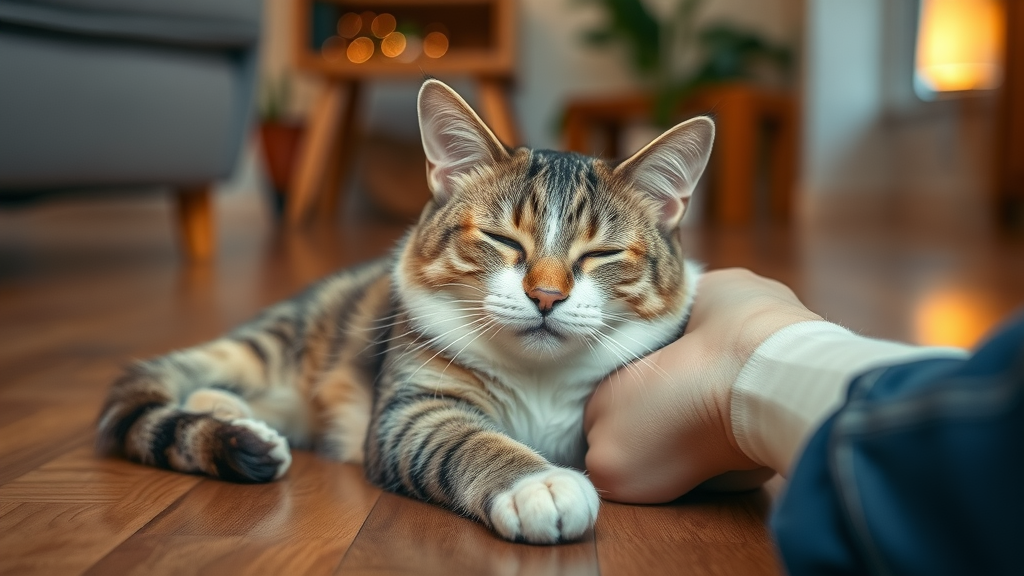Have we got it wrong about our independent feline friends? If you’ve ever wondered “how much attention do cats really need?” you’re not alone. Many cat owners believe their pets are low-maintenance and self-sufficient—unlike dogs—but what if your cat is craving more interaction than you think? Dive in as we expose surprising truths and misconceptions about feline companionship to help you build a strong bond with your furry family member, while ensuring their happiness and health.
Are We Giving Cats Enough Attention? Rethinking How Much Attention Do Cats Really Need?
When it comes to how much attention do cats really need , the answer is more nuanced than you might expect. While cats have a reputation as independent creatures, they still crave affection, play, and companionship—just in different ways than dogs. Many adult cat owners underestimate the amount of attention a cat actually requires, which can lead to unwanted behavior and even mental health issue risks for your feline companion. Observing both positive and negative attention-seeking signs can help cat owners strike the right balance between independence and engagement.
The significance of cat attention goes beyond simple petting sessions. Giving your cat targeted, meaningful attention helps prevent unwanted behaviors, promotes mental stimulation, and can build a lifelong strong bond between feline and family member. Whether you share your home with a playful kitten or serene senior cats, it’s critical to pay attention to how their needs evolve over time. Let’s explore why giving your cat the proper love and attention is about quality, not just quantity.

- Discover why cat attention matters
- Explore signs your cat needs more attention
- Understand the balance between independence and engagement
Cracking the Code: How Much Attention Do Cats Really Need Daily?
So, how many hours a day should you dedicate to your cat? The short answer: it greatly depends on your cat’s age, temperament, and daily lifestyle. While cats are known as independent creatures, research and feline behaviorists agree that even the most solitary cats require daily interaction with their cat owner. Kittens and highly social breeds may seek constant stimulation and entertainment, while an adult cat or senior cats can thrive with less—but still consistent—dedicated time.
Consistent daily attention, even in short intervals, supports your cat’s mental stimulation, reduces boredom, and strengthens your connection. Play sessions, grooming, and quiet time together each serve unique roles in supporting your cat’s overall wellbeing. Ignoring these needs—no matter how subtle—can eventually manifest as unwanted behaviors, destructive scratching post use, or anxiety. In the next section, we break down attention recommendations for every life stage and personality.
| Kitten | Adult | Senior | Highly Social | Independent | |
|---|---|---|---|---|---|
| Minimum Hours | 2-4 hours | 1-2 hours | 1-1.5 hours | 3+ hours | 0.5-1 hour |
| Recommended Activities | Play, training, cuddling | Play, grooming, quiet petting | Cuddles, gentle play, brushing | Interactive games, social time | Solo toys, low-key interaction |
| Seeking Attention Signs | Vocalizing, following, playful bites | Pawing, head-butting, meowing | Clinginess, late-night meowing | Constant following, loud meows | Occasional approach, subtle cues |

Factors Shaping How Much Attention Do Cats Really Need
The amount of attention a cat needs is shaped by several unique factors. Age, breed, individual personality, health, and even your household’s energy directly influence how much attention your feline friend craves. For example, Maine Coon and Siamese cats tend to be outgoing and demand interaction, while a British Shorthair may prefer solo play with only occasional cuddles. Even independent cats require engagement—just on their own terms.
Life stage matters as well. Kittens and energetic adults will want frequent play and mental stimulation, while senior cats often need consistency, gentle petting, and calm companionship. If your cat is coping with a health issue, you may notice changes in how much time they want to spend with you. Cat owners must continually pay attention to subtle behavioral shifts, adapting routines to keep their feline companion healthy and happy.
Personality and Breed Influence on Attention Do Cats Require
Breed-specific traits and your cat’s unique personality play a major role in determining how much attention do cats really need . For instance, social breeds like Siamese and Maine Coons are known for their affectionate natures, actively seeking out interaction and stimulation from their cat owners. In contrast, independent breeds such as the British Shorthair or even rescue cats with timid backgrounds may require more gentle, indirect displays of attention—like being near you without direct engagement. It’s a good idea for every cat owner to research their pet’s breed—if known—to better understand their social needs and help nurture a strong bond through tailored routines.
Yet, even within the same breed, personality differences abound. An individual cat might be outgoing, vocal, and love playtime, while their littermate is content simply napping nearby. The key is to pay attention to your feline companion’s cues, adjusting the routines and types of affection you provide. When you match attention strategies to your cat’s unique disposition, you’ll avoid unwanted behaviors and promote lasting emotional well-being.

Age, Health Issue Considerations, and Cat Lifestyle
Kitten, adult, or senior cats all display different needs regarding attention and stimulation. Kittens demand high levels of play and supervision for both safety and growth, while an adult cat balances periods of active engagement with solo exploration or naps. Senior cats, especially those coping with chronic health issue risks such as arthritis or cognitive decline, may seek additional comfort, quiet time, or frequent but short interactions.
If your cat develops a health issue—physical or mental—attention requirements might shift dramatically. Illness, injury, or conditions like separation anxiety mean your pet may require more frequent comfort and soothing. Likewise, environmental factors such as indoor-only living or a busy household can shape your feline’s routine and expectations. It’s vital that cat owners proactively monitor, adapt, and personalize their approach to meet these evolving needs.
Hours a Day: What Does Quality Time Look Like for Cats?
Simply clocking “hours a day” with your feline isn’t enough. Quality matters far more than raw time. A good idea is to engage in short, meaningful sessions—such as 15 minutes of interactive play, brushing, or just quiet sitting—several times per day. This approach delivers mental stimulation , relieves boredom, and signals that you value your cat’s companionship. For highly social cats, extended play or structured cuddle routines may keep them thriving, while independent cats still appreciate regular, low-pressure proximity or solo toy time near you.
Building a schedule that includes a variety of attention types—active play with a favorite toy, calm brushing, access to interesting window views, and daily affection—enriches your cat’s daily experience. And remember: every cat’s “sweet spot” is different. Assess and adapt as your relationship grows to best support your individual cat.
Signs Your Cat is Seeking Attention: What to Watch For
Cats aren’t always straightforward when they want to spend hours by your side. Some seeking attention cues are obvious, but others are subtle. Common attention-seeking behaviors include vocalizing, following you from room to room, pawing at objects (or you!), kneading, head-butting, or even sitting directly on your keyboard or favorite chair. For the observant cat owner, recognizing these actions is the first step toward meeting your feline friend’s social needs and preventing unwanted behavior or mental stimulation deficits.
Occasionally, these signs overlap with negative behaviors. A bored or lonely cat may act out by knocking over items, meowing excessively, scratching post use outside of accepted areas, or even neglecting the litter box. Persistent unwanted behaviors can be a plea for more love and attention. It’s crucial to differentiate boredom from medical concerns, as uncharacteristic changes may signal a health issue requiring veterinary care. Consistently interpreting your cat’s body language bridges the gap between perceived independence and the real emotional needs of your feline companion.
"Cats may be known for independence, but true well-being comes from meaningful interaction." – Feline Behavior Specialist
Understanding Separation Anxiety: Emotional Effects on Cats
Separation anxiety is not just a dog problem. When left alone for long hours a day, some cats experience distress that manifests emotionally and physically. This form of anxiety can develop in cats of all ages, but is especially common if routines suddenly change, a family member leaves, or your cat has recently been adopted. Feline separation anxiety is a health issue that can lead to destructive or bizarre behaviors, harming both your pet’s wellbeing and the peacefulness of your household. Learning to recognize and address it is key for every devoted cat owner.
While some cats tend to display anxiety more openly than others, all cats require reassurance and routines, especially after major life shifts. Proactive engagement, environmental enrichment, and structured affection are among the best tools to equip your feline companion with the resilience to handle alone time confidently.
Recognizing the Symptoms of Separation Anxiety in Cats
The symptoms of feline separation anxiety are varied and sometimes easily mistaken for other problems. Common signs include excessive vocalization (especially when you’re preparing to leave), inappropriate elimination (such as missing the clean litter box), destructive scratching, loss of appetite, or compulsive grooming. Some cats may shadow their owner obsessively, refusing to spend hours alone in another room—even for a nap. Marked changes in temperament or sudden withdrawn behavior are red flags that your cat is struggling in your absence.

Addressing Separation Anxiety: Steps You Can Take
If you spot signs of separation anxiety , don’t panic. You can reduce your cat’s stress with gradual desensitization to your departures, providing safe spaces, and increasing interactive playtime when you’re home. Enrich your environment with scratching posts, window perches, and toys that promote solo play. Routine is your friend: keep feeding, play, and affection times consistent. If a health issue is suspected, consult your veterinarian to rule out medical causes behind attention-seeking or anxiety-based behaviors.
Some cat owners find success using puzzle feeders, quality time before leaving, or calming pheromone sprays. Over time, these steps reinforce positive associations with alone time and foster independence, all while communicating the love and attention your cat craves. Remember, patience and gentle persistence are key in building your feline friend’s comfort and confidence during solo hours.
How to Give Your Cat the Right Kind of Attention
Effective attention is about matching your cat’s needs and communication style. While some cats require more attention through vigorous play, others thrive on peaceful togetherness or brief, structured sessions. Regardless of age or breed, all cats flourish when their interaction is varied and mindful. By providing both mental stimulation and emotional support, you’re setting your feline companion up for a happier, healthier life—while limiting unwanted behaviors that come from excess boredom, loneliness, or under-stimulation.
Here’s how you can enrich your cat’s day-to-day experience and keep your bond strong:
- Interactive play sessions
- Positive reinforcement
- Structured affection time
- Safe exploration spaces
- Quiet companionship
Balancing Alone Time: How Much Alone Time Does a Cat Need?
Cats are famous for relishing some alone time. Most healthy adult cats can spend hours contentedly entertaining themselves, so long as their mental and emotional needs are regularly met. But too much solo time—especially without environmental enrichment—can invite boredom, separation anxiety, and unwanted behaviors. Ideally, your cat’s alone time should be balanced with daily sessions of play, cuddling, and positive interaction. For the typical cat owner, this means being present enough to observe and adapt to subtle shifts in demeanor, cleanliness, or habits such as clean litter box use or scratching post activity.
How much is too much? A good rule is that cats require a few structured hours a day of dedicated attention, and the rest filled with access to toys, food puzzles, or sunny perches. Senior cats and kittens often need more supervision or company, while independent adult cats can thrive with regular, but low-key, check-ins. The key is providing quality over quantity and being mindful of your individual cat’s unique preferences.
Watch: Feline Body Language—How to Tell if Your Cat Wants Attention
What Happens If You Don't Give Your Cat Enough Attention?
Failing to give your cat enough attention can set off a domino effect of problems, both behavioral and health-related. Under-stimulated cats tend to develop unwanted behaviors such as destructive scratching, constant meowing, aggression, or litter box issues. Mental stagnation and emotional neglect can even escalate to depression or anxiety, especially if your feline companion is a social breed or has a strong attachment to a family member.
Beyond behavior, insufficient attention can leave your cat vulnerable to physical health issues. Lack of mental stimulation is linked to obesity, lethargy, and sometimes even disorders involving appetite or grooming. This cycle can spiral if not checked, eroding the strong bond between cat and owner. Giving your cat consistent, meaningful attention is not just kind—it's essential for a harmonious household.
Behavioral Problems Linked to Attention Deficit
Common unwanted behaviors attributed to low attention levels in cats include: excessive vocalization (meowing or howling), persistent pawing, biting, overly rough play, and elimination outside the clean litter box. Cats may intentionally knock objects over or chew on inappropriate items. These are more than mere annoyances—they are your cat’s way of telling you their needs aren’t being met. Carefully observing these signals allows you to address the root cause, delivering the love and attention necessary to correct the behavior and restore balance to your cat’s life.
Potential Health Issue Risks for Under-stimulated Cats
When a cat lacks adequate attention and stimulation, mental and physical health issue risks increase. Obesity from inactivity, compulsive grooming or fur-pulling, and stress-induced illnesses such as urinary tract infections can develop. The impact is even greater for cats dealing with pre-existing conditions or senior cats who rely on regular routines and positive reinforcement for comfort. By staying tuned into your cat’s daily rhythm—and catching changes quickly—cat owners can safeguard their feline friend’s health for years to come.
The 333 Rule for Cats: What Every Pet Parent Should Know
The 333 rule for cats is a simple way to understand feline adjustment and attention needs. Expect your new or rescued cat to take three days to decompress, three weeks to start settling into new routines, and at least three months to fully bond with the family and your home’s unique rhythms. During these periods, it’s vital to give your cat extra love, structured play, and patience. This approach reduces anxiety, sets healthy habits, and helps both independent creatures and social cats acclimate successfully.
Understanding The 333 Rule: How Much Attention Do Cats Really Need Explained

Real-Life Stories: Experiences with Cat Attention Do Cats Require
Every cat owner’s story is a little different. For some, a once-aloof feline became a loving companion overnight with just a bit more daily attention. Others find that regular play and grooming routines resolved stubborn litter box issues or endless meowing. These real-life experiences prove how much attention do cats really need isn’t a fixed number, but a personal journey—one where observation, flexibility, and commitment yield rewards for both cat and human family member.
Whether you’ve rescued an independent senior or adopted an energetic kitten, investing in tailored attention habits builds a resilient, trusting bond with your feline friend. Listening to your pet’s cues, nurturing their curiosity, and providing consistent love and attention gives every cat the best shot at a happy, healthy life.
"After adjusting my daily routine, my once aloof cat became a loving companion—proving how much attention do cats really need!"
Frequently Asked Questions About How Much Attention Do Cats Really Need
How much attention does a cat really need?
Most adult cats require one to two hours of varied attention do cats each day, including play, affection, and companionship. Highly social breeds or kittens may need more, while independent cats need less—but no cat thrives without daily interaction. Pay attention to your feline’s cues for the best results.
What is the 333 rule for cats?
The 333 rule guides new cat owners through acclimation: three days for decompression, three weeks for building trust and routine, and three months for deep bonding and behavioral adjustment. Following this rule helps reduce separation anxiety and supports a strong bond with your pet.
What happens if I don't give my cat enough attention?
Neglecting a cat’s attention needs can result in behavioral and health issues. Common signs include destructive actions, noisy meowing, inappropriate elimination, and even depression. Over time, lack of engagement can damage the bond between cat owner and feline friend, leading to stress for both.
How much alone time does a cat need?
Most healthy adult cats can spend hours of their day alone, especially if their environment offers enrichment, toys, and safe resting spots. However, all cats require daily check-ins and interactive time to prevent boredom, loneliness, or anxiety-based issues.
Key Steps to Meeting How Much Attention Do Cats Really Need for a Healthy, Happy Pet
- Observe your cat’s body language
- Monitor daily play and cuddle time
- Schedule routine interactive sessions
- Address health issue risk factors
- Adapt attention do cats strategies as your pet ages

Ready to Optimize Your Cat's Wellbeing? Subscribe for More How Much Attention Do Cats Really Need Tips!
🐾 Love pets as much as we do? Get the best tips, treats, and tail-wagging stories delivered monthly. 👉 Subscribe to our newsletter and never miss a bark or purr!
📧 One email. All the value. Join thousands of pet parents who get our monthly roundup of pet care tips, product reviews, and giveaways.
Be proactive: Observe, engage, and adapt your attention routine so your cat thrives—because every feline companion deserves tailored care and a strong bond with their favorite family member.
Understanding your cat’s attention needs is crucial for their overall well-being. While cats are often perceived as independent, they still require regular interaction to stay healthy and happy. According to the American Animal Hospital Association (AAHA), interactive play is essential for a cat’s physical health, mental sharpness, and emotional fulfillment. They recommend engaging your cat in two to three play sessions daily, each lasting 10-15 minutes, to satisfy their natural hunting instincts and prevent boredom. ( aaha.org )
Additionally, incorporating variety in playtime can keep your cat engaged. Using different types of toys, such as wands, balls, and interactive puzzles, can stimulate your cat both mentally and physically. Regular grooming sessions and quiet companionship also contribute to a strong bond between you and your feline friend. ( purelypetsinsurance.co.uk )
By dedicating quality time to play and interact with your cat daily, you can ensure they remain content and healthy. If you’re serious about understanding and meeting your cat’s attention needs, these resources will provide valuable insights and practical tips.
 Add Row
Add Row  Add
Add 




Write A Comment